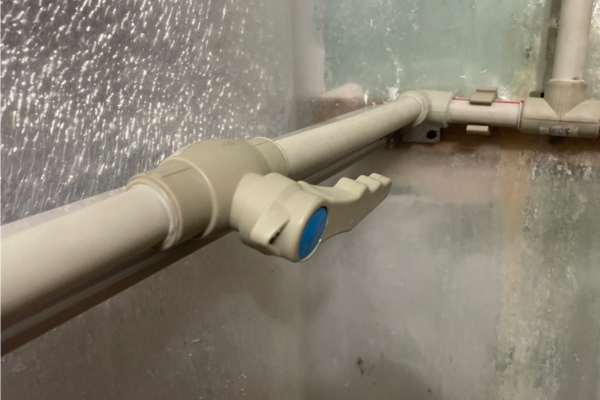
A cold water diverter is a mechanical valve installed on a hot water line. It redirects the initial cold water, known as redwater, that sits in the pipe before hot water arrives. Instead of wasting this water down the drain, the diverter sends it to a greywater tank, a garden irrigation system, or back into the hot water storage system for reuse. These diverters work using water pressure and do not require electricity.
How they work
When a hot tap is turned on, the diverter senses the temperature of the water. Cold water is diverted away until hot water flows through the pipe. This reduces water wastage without affecting the delivery of hot water. The diverted water can be repurposed for non-potable uses, such as flushing toilets or watering gardens, which is especially valuable in homes with rainwater or greywater systems.
Benefits and limitations
Benefits
- Simple, low-cost solution to reduce water waste
- Easy to retrofit to existing plumbing systems
- Minimal maintenance and no power requirements
- Contributes to overall sustainability in homes and renovations
Limitations
- Does not speed up the arrival of hot water at the tap
- May require temperature controllers to maintain consistent water temperature
- Works best when paired with other water-saving measures, like greywater tanks
Current trends in 2025
Cold water diverters are increasingly popular in Australian renovations due to a stronger focus on sustainability and water efficiency. With building codes prioritising reduced potable water use, diverters are a cost-effective way to align with modern standards. They fit well into sustainable renovation trends, where homeowners are combining diverters with rainwater harvesting systems and energy-efficient hot water units.
Smart home technology is also influencing plumbing design. In new builds, diverters are being paired with smart temperature sensors and timers to optimise water use. DIY-friendly installation options are available, making them appealing for budget-conscious renovations.
Installation considerations
- Ensure diverters comply with local plumbing regulations and water reuse standards
- Install alongside temperature control devices to prevent inconsistent water delivery
- Plan diverter placement during renovations to integrate with greywater or rainwater systems
- Clearly mark diverter lines for ease of maintenance and inspection
Cold water diverters offer a simple and effective way to save water by redirecting the cold water that sits in pipes before hot water arrives. They are affordable, low-maintenance, and suitable for both retrofits and new homes. As sustainability and water efficiency remain key focuses in Australian building and renovation, these devices are an increasingly practical upgrade for homeowners.




